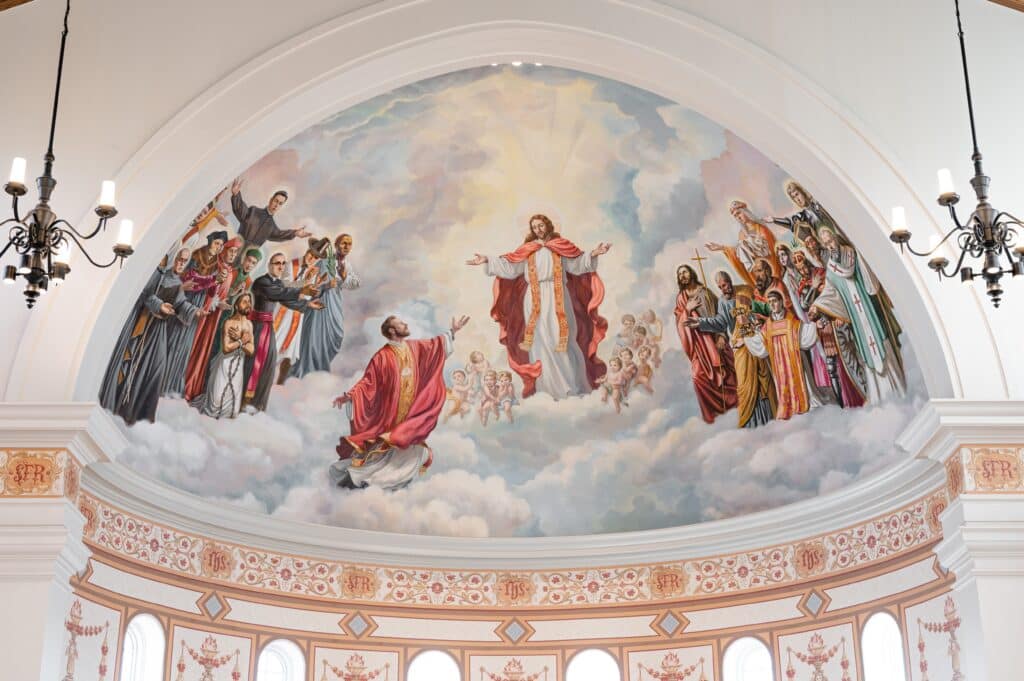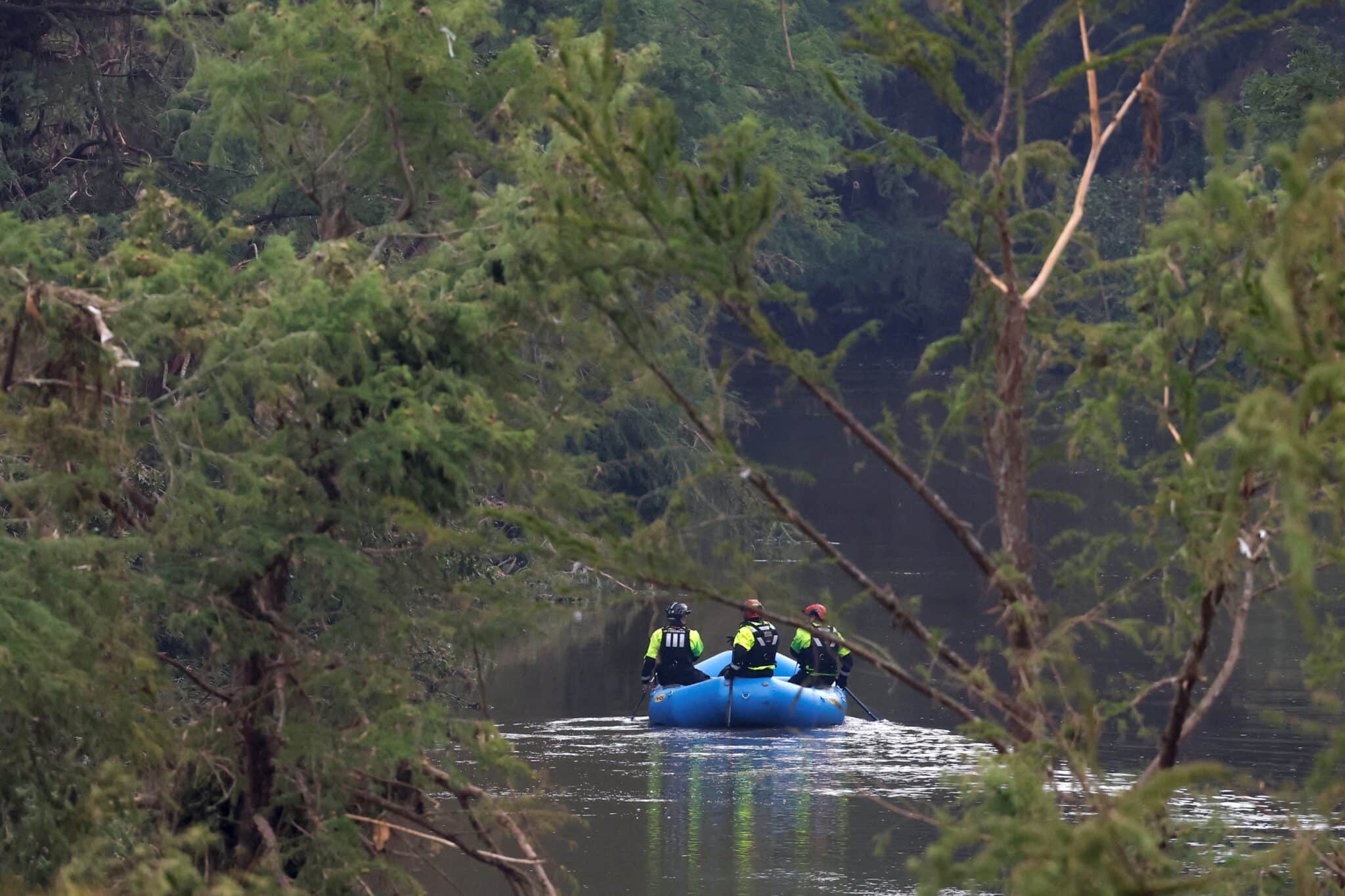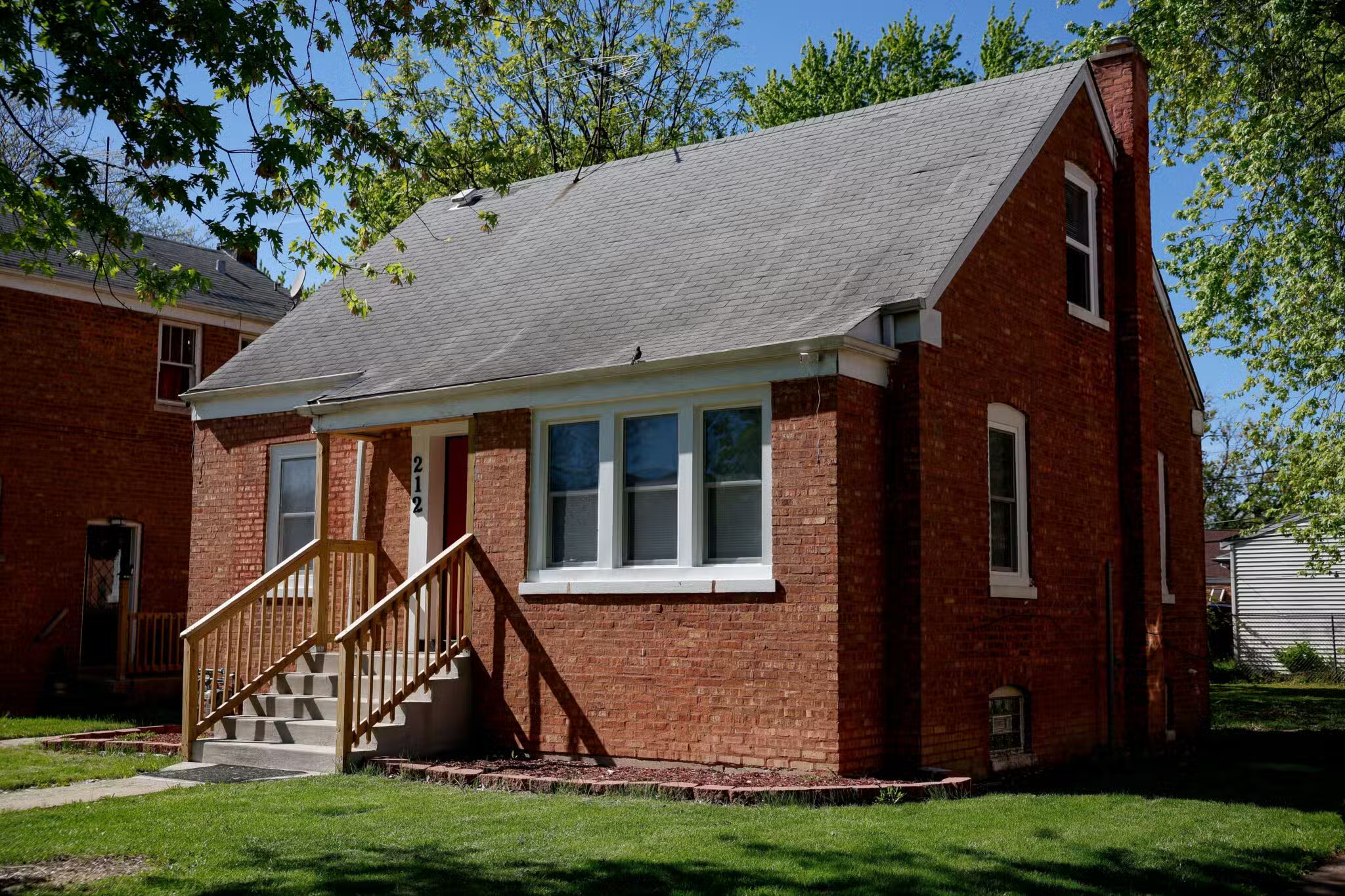This Oklahoma priest’s September 23 beatification is a testament to his legacy as peacemaker and martyr.
History is being made in Oklahoma City this September 23. At 10 a.m. on that Saturday, thousands will fill the city’s Cox Convention Center to witness and celebrate the beatification of Father Stanley Francis Rother. This is only the second beatification to take place on American soil. Father Rother, the first recognized American martyr, is also the first beatified American-born man. He was martyred in 1981, speaking up for the dignity of peasant farmers in the village of Santiago Atitilán, during Guatemala’s bloody civil war.
That’s a lot of distinction for a farmer from Okarche, a western Oklahoma town with a population of 1,300 people. Yet much of what makes Father Rother’s story stand out is precisely how ordinary he was—and how faithfully he lived his call to the priesthood, often in spite of serious obstacles.
This is a huge moment for the Church in the United States, says Bishop Daniel Mueggenborg, auxiliary bishop for the Archdiocese of Seattle, and a great moment for all Catholic priests, “as one of their own brothers is recognized in this way.” Msgr. Timothy Stein agrees. But he emphasizes that, as the first American diocesan priest “to be raised to the honors of the altar,” it’s of particular significance to him and to the thousands of other diocesan priests in the United States.
Msgr. Stein, the pastor of St. Mary Parish in Altoona, Pennsylvania, never met the Oklahoma martyr. Yet as he explains, “Like all diocesan priests, Father Stanley Rother found holiness in the midst of the people he was called to serve, at first among the parishes he was assigned to in Oklahoma, and then in his diocese’s mission in Guatemala. He sought nothing more than to be one with the people of God.
“At a time when many are wondering, Can anything good come out of a local church, out of the diocesan priesthood?, the heroic life and death of Father Stanley Rother, a shepherd who refused to abandon his flock at a time of great peril, shows that holiness is possible for those called to live the life of a diocesan priest,” Msgr. Stein continues. “Without the support of a religious community, without an approved Rule of Life, without a singular charism or a distinctive spirituality—a diocesan priest can be a holy man. He can become a saint.”
A Farmer from Okarche
Born in a farmhouse in the middle of an Oklahoma dust storm during the Great Depression, Stanley Francis Rother was listed in his high school yearbook as president of the Future Farmers of America. But the farm boy from Okarche decided to plant a different kind of harvest. At the end of his senior year, Stanley surprised family and friends with the announcement that he’d be leaving for San Antonio to attend St. John’s Seminary.
Stanley struggled with academics in the seminary, in particular with Latin. He failed the first year of theology and was sent home by the rector, who suggested that Stanley consider a different vocation. But back in Oklahoma City, Stanley requested another chance from Oklahoma’s Bishop Victor Reed—and the supportive bishop agreed, finding him a spot at Mount St. Mary’s Seminary in Emmitsburg, Maryland.
“Stanley was hardworking, dedicated, faithful,” remembers Father Tom Connery, a classmate from the Diocese of Albany. Father Connery remembers going to the Grotto of Our Lady of Lourdes with Stanley to “prepare the place, working together. Stan had a great love and devotion for the Virgin Mary,” and the Grotto was a special place of prayer for him.
Connery credits Father Rother with inspiring his own “missionary impulse.” Ordained on the same day for different dioceses, both friends went on to serve the Church in mission territory, although in opposite directions—Father Rother to Guatemala and Father Connery to Alaska. “We were north and south, two different points, but with our missions of service to God’s people the same. He was a kindred spirit that helped me find my way.”
On May 25, 1963, at the age of 28, Stanley was ordained for the then-Diocese of Oklahoma City and Tulsa. He served the first five years of his priestly ministry without much notice in various Oklahoma assignments. But everything changed when he answered the call to serve at the Oklahoma mission in Guatemala. The farmer who loved the land and recognized God in all of creation found his heart’s vocation as a priest to the Tz’utujil Mayan people.
Oklahoma Mission
How a 46-year-old priest from a small German farming community in Oklahoma came to live and die in a remote, ancient Guatemalan village is a story full of wonder and God’s providence. Pope John XXIII requested in the early 1960s that North American dioceses and religious communities send missionaries to South and Central America, and the Church in Oklahoma responded.
In 1964, the then-Diocese of Oklahoma City and Tulsa took over the care of the church of St. James the Apostle (Santiago Apóstol), the oldest parish in the Diocese of Sololá, Guatemala, dating back to the 16th century. No resident priest had served the indigenous community of Santiago Apóstol for almost a century.
He had the heart of a shepherd. The life and witness of Father Rother is a gift to the Church in America.
From the onset, that first Oklahoma missionary team understood that the Tz’utujil are an agricultural people who retain much of their ancient Mayan culture and pride. When he arrived at Santiago Atitilán in 1968, Father Rother instantly fell in love with the volatile and stunning land of volcanoes and earthquakes—but above all, with its people. His Tz’utujil Indian parishioners called him “Padre Apla’s,” which translates as “Francis” or “Francisco” in their native language.
Over his 13 years of service to the Oklahoma mission, Father Rother helped develop a farmers’ co-op, a nutrition center, a school, a hospital clinic, and the first Catholic radio station in the area, which was used for catechesis. But perhaps most importantly, whether fixing a tractor or farming the land, the farmer priest was never afraid to dig in and get his own hands dirty—a trait that was deeply loved by his Tz’utujil parishioners.
Although he did not institute the project, Father Rother was also a critical driving force in developing Tz’utujil as a written language, which led to translations of the liturgy of the Mass and the Lectionary, with the New Testament in Tz’utujil being published after his death. And the same young man who flunked because he could not master Latin became, by the grace of God, the missionary pastor who not only learned Spanish, but also became fluent in his parishioners’ native tongue, Tz’utujil.

As a fellow missionary serving across the lake from Santiago Apóstol, Maryknoll Sister Bernice Kita remembers mostly Father Rother’s gift of presence—like the time he made a point of taking a motor launch across the lake to attend her installation as administrator of the parish. Or his regular prison visits to a parishioner who had gotten drunk and driven Father Stan’s car into the lake, killing a car passenger.
“Stan took pity on this man,” remembers Sister Bernice. He went “out of his way to offer him the help he didn’t deserve, and the mercy that he needed, from the priest who was harmed by his actions.”
She also remembers attending a Mass 40 days after Father Rother’s murder where Sololá’s Bishop Angélico Melotto said he believed one day the Oklahoma missionary would be recognized and canonized as a martyr.
‘If It Is My Destiny . . .’
Once Guatemala’s civil war found its way to the peaceful villages surrounding beautiful Lake Atitlán, many people, including Father Rother’s own catechists, began to disappear regularly. Father Rother’s response was to show his people the way of love and peace with his life.
“His martyrdom was simply a confirmation of who he was,” says Bishop Mueggenborg. “No one is declared a martyr just because of how they died. Rather, they had to live their life in such a way that it was crowned with martyrdom. Father Rother did that—he lived his life as a self-offering to God in love of his brothers and sisters. He did it through daily work in the mission, teaching agriculture to simple farmers, educating the children, protecting the youth from forced conscription into the Guatemala military, and through assisting grieving families in burying their dead whom no one would claim. He lived his life in such a way that it was that life which led to his martyrdom.”
In a letter dated September 1980 to the bishops of Tulsa and Oklahoma City, Father Rother described the political and anti-Church climate in Guatemala: “The reality is that we are in danger. But we don’t know when or what form the government will use to further repress the Church. . . . Given the situation, I am not ready to leave here just yet. There is a chance that the Govt. will back off. If I get a direct threat or am told to leave, then I will go. But if it is my destiny that I should give my life here, then so be it. . . . I don’t want to desert these people, and that is what will be said, even after all these years. There is still a lot of good that can be done under the circumstances.”
In his final Christmas letter to Oklahoma Catholics, Father Rother once again concluded: “The shepherd cannot run at the first sign of danger. Pray for us that we may be a sign of the love of Christ for our people, that our presence among them will fortify them to endure these sufferings in preparation for the coming of the Kingdom.”
A month later, and six months before his death, Father Rother and his associate pastor left Guatemala under threat of death after witnessing the abduction of a parish catechist. However, he returned to his beloved Guatemala in time to celebrate Holy Week in April of 1981, ignoring the pleas of those who urged him to consider his own safety.
“Just before he returned to Guatemala for the last time, he told me how much he desired to come back,” recalled Archbishop Emeritus Eusebius J. Beltran in a 30th-anniversary message to the community of Cerro de Oro, one of the mission’s satellite churches near Santiago Atitlán. “He knew the dangers that existed here at that time and was greatly concerned about the safety and security of the people. Despite these threats and danger, he returned and resumed his great priestly ministry to you. . . . It is very clear that Padre Apla’s died for you and for the faith,” continued Archbishop Beltran, who was serving as bishop of Tulsa in 1981 when Father Rother was killed.
On July 12, 1981, in a statement read in all the nation’s parishes, the Guatemalan bishops denounced “a carefully studied plan” by the government “to intimidate the Church and silence its prophetic voice.”
On July 28, 1981, at 1:30 a.m., three Spanish-speaking Ladino (nonindigenous) men snuck into the rectory, beating Father Rother and shooting him twice in the head. His body was sent back to Oklahoma for burial, but his heart was entombed under an altar in Santiago Atitlán, by request of his parishioners. When Franz Rother was told about his son’s death, he responded: “We are real proud of him. He felt his people needed him and he went back.”
The Oklahoma priest was one of 13 priests—and the first American priest—slain during Guatemala’s 36-year war, a tragedy that claimed an estimated 140,000 lives. No one has ever been prosecuted for his killing.
“He had the heart of a shepherd. The life and witness of Father Rother is a gift to the Church in America, especially in the way he lived his priesthood: selflessly, generously, heroically,” says Oklahoma City Archbishop Paul S. Coakley, a fellow graduate of Mount St. Mary’s Seminary. “He has been an inspiration to me since my seminary days when I first learned of his death. He was referenced as a hero by all of us!
“Father Rother was a servant after the manner of Christ,” Archbishop Coakley explains. “The Church, and priests in particular, need the witness of men like this servant of God who serves as an icon of Jesus the good shepherd.”
The Path to Canonization
Father Rother’s name was given to Pope John Paul II on February 6, 1996 (on his second visit to Guatemala) as one of 78 people killed in Guatemala’s guerrilla war and believed to be martyrs for the faith. His cause was officially opened by the Archdiocese of Oklahoma City in 2007 and was completed with additional testimonies in July 2010, making him a Servant of God. Later that year, the Congregation for Saints’ Causes declared him Venerable.
The cause had begun in the diocese, but the Guatemalan bishops’ conference agreed that the testimonies already collected be transferred to the Archdiocese of Oklahoma City. In 2009, the bishops of Guatemala published Testigos Fieles del Evangelio, summarizing the lives of 63 people who gave their lives for their faith between 1976 and 1985. Father Stanley Rother was included in that book.
A panel at the Vatican reviewed the circumstances of his death and declared him a martyr for the faith; the bishop of Rome agreed on December 2, 2016. Because of that, no miracle was needed for him to be declared Blessed on September 23, 2017. That means his feast can be observed locally (United States and Guatemala) but not worldwide. If a Blessed belonged to a religious order or congregation, his or her feast can be observed by that group. Usually, beatifications now occur locally; canonizations are normally celebrated at the Vatican.
In connection with Blessed Stanley Rother, if a miracle is accepted by separate panels of medical doctors, theologians, and cardinals—and by the bishop of Rome—then he can be declared a saint, and his feast can be celebrated worldwide.








